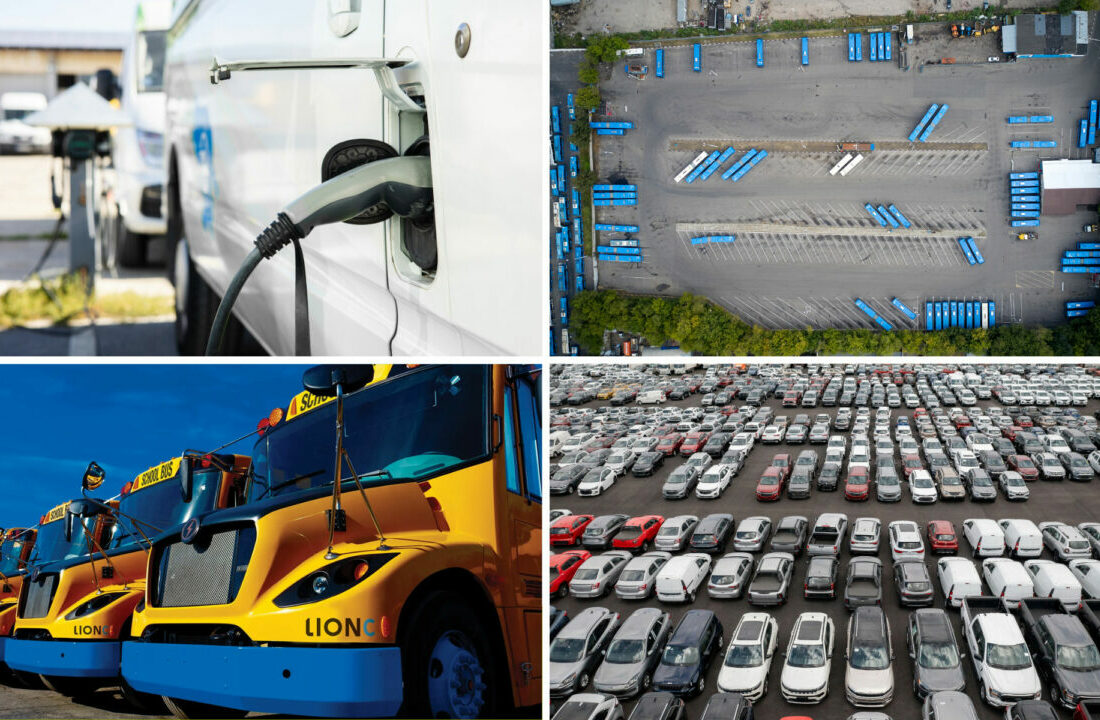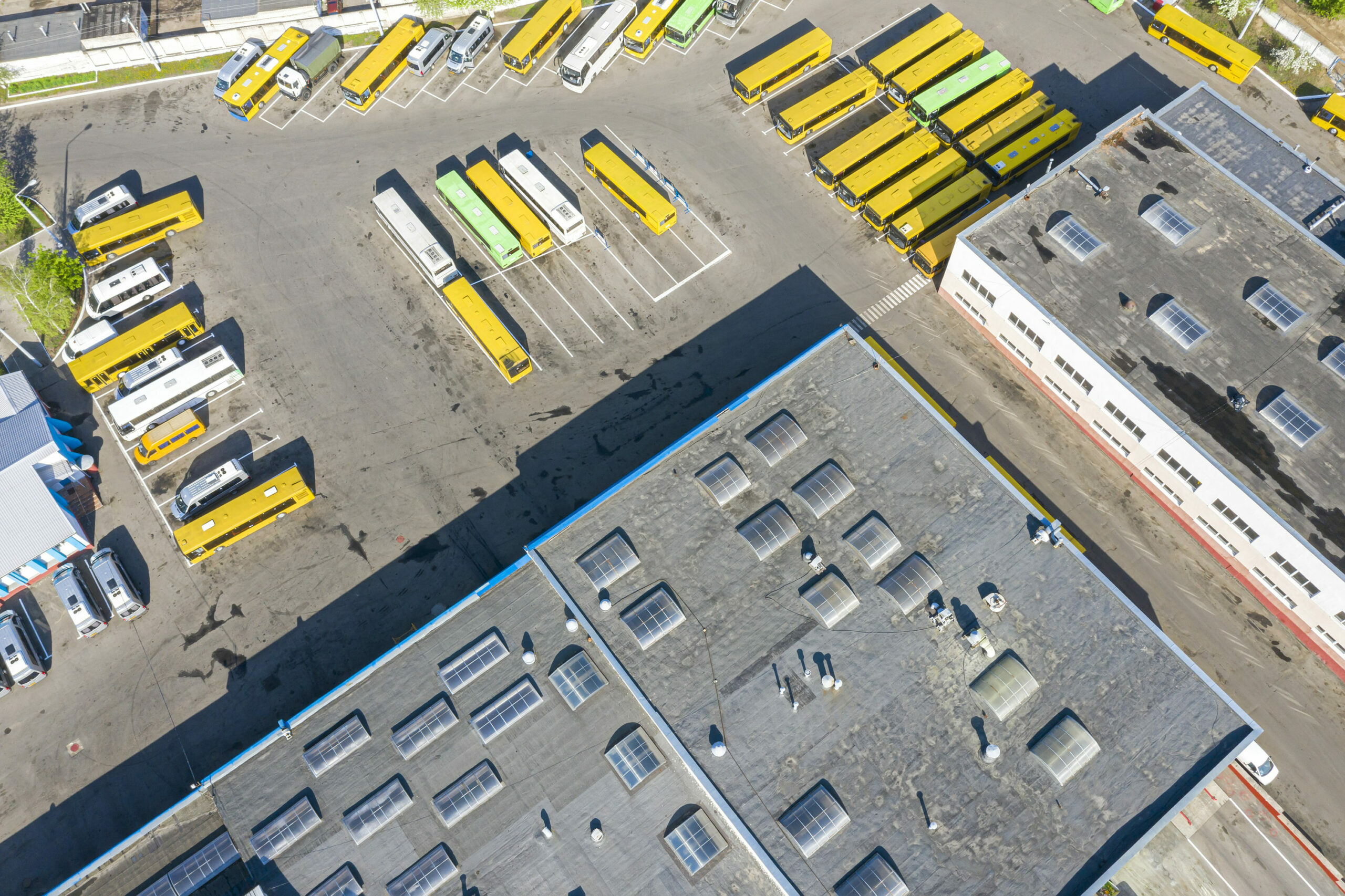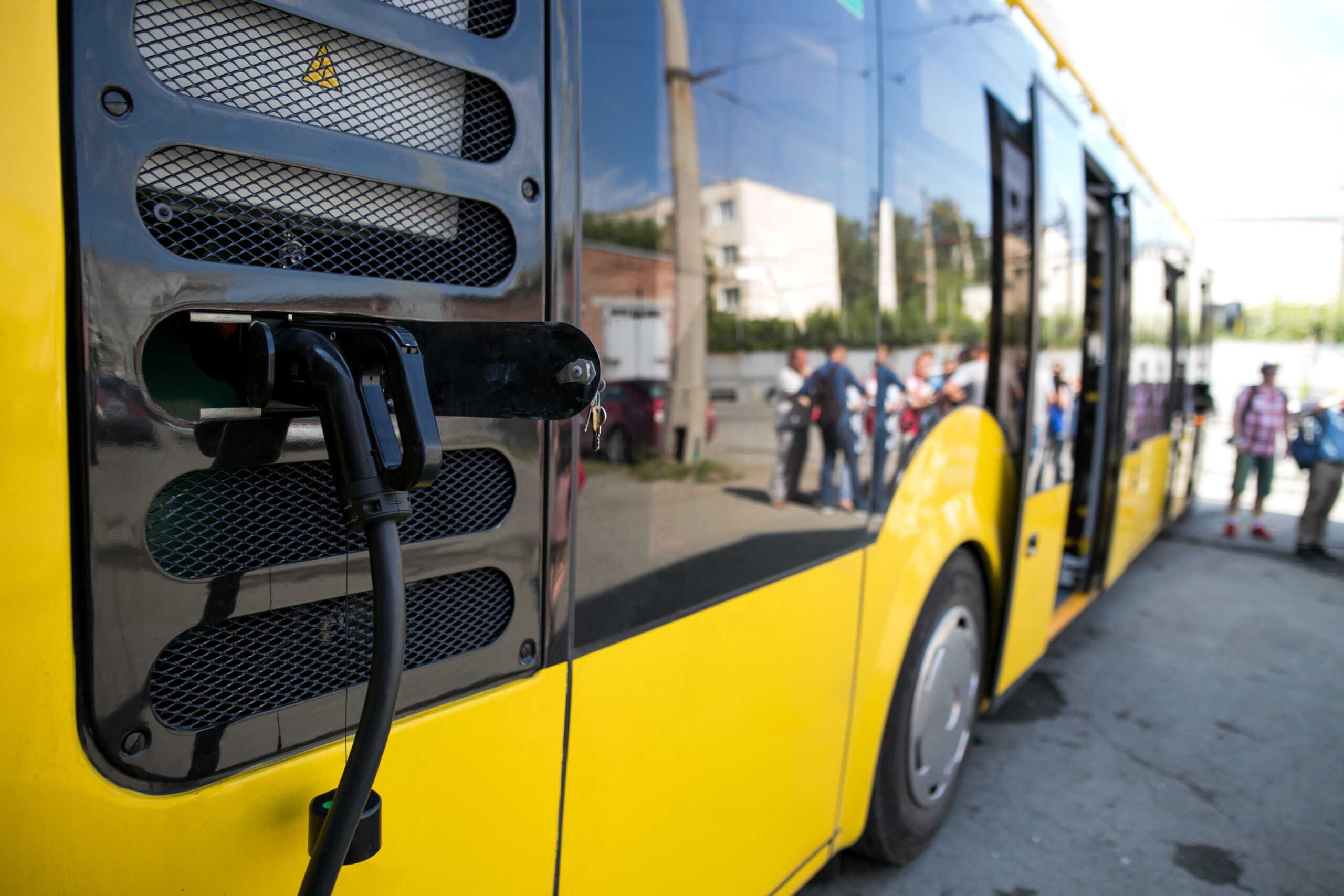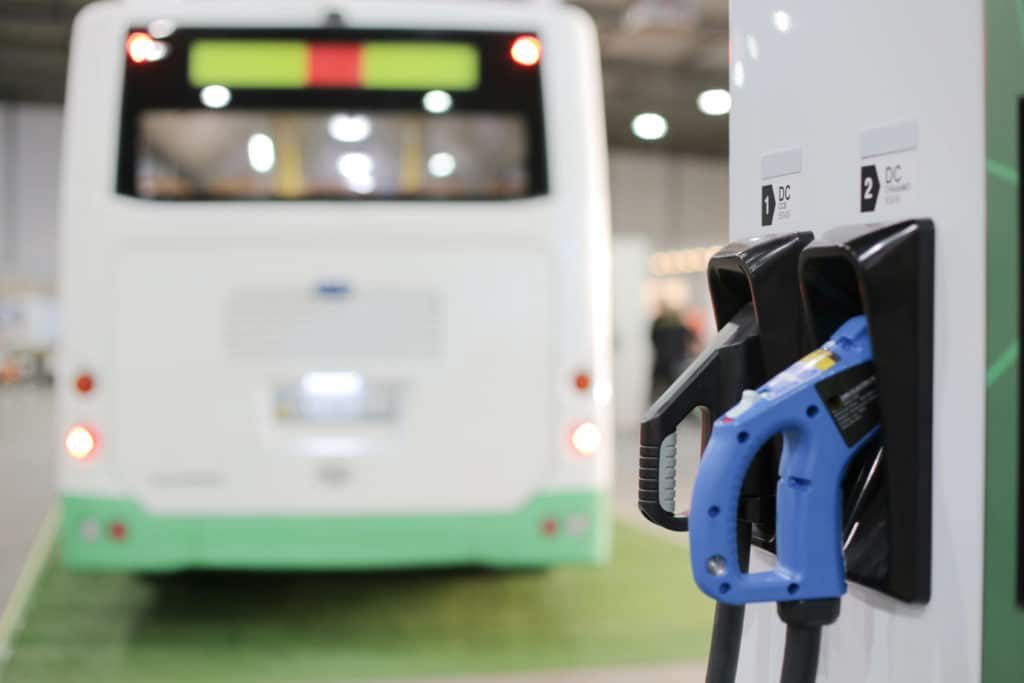
10 years ago, we saw initial pilot deployments of zero-emission vehicles in fleets as electric and hydrogen technology was put to the test in light-duty, medium-duty, and heavy-duty vehicles. Today, zero-emission goals have been established and many fleets have moved into larger scale deployments, while others still are in the initial pilot phase.
Will we see the progress needed in the next 10 years to meet emissions goals? What advancements should we expect to see in fleet technology? How will developments like V2G play a role in our electrified future?
These are all questions we touch on in this episode with an array of experts including:
Dan Hilson: The BetterFleet Academy provides fleet operators with everything they need to know about moving to an electric and hydrogen fleet. We look at issues in detail helped by thought leaders and our own staff here at Evenergi and BetterFleet.
Holly Montalban: In this episode we take a look into the future of electrified transportation with an array of experts from organizations including Metroline, the New South Wales government, Wrightbus and the Environmental Defense Fund, and then we’ll get into a deep dive with Paul Comfort who is the host of the Transit Unplugged podcast, SVP at Modaxo, former CEO of MTA Maryland, and longtime transit advocate. Take a look while we ask experts, “Where do you see zero-emission vehicles in your industry 10 years from now?”
Alix Butler: I feel that over the next 10 years we’ll have a greater understanding of the full suite of capabilities that the infrastructure has and some of the restrictions that are going to be put onto our industry which will potentially reshape our operations so we have to adapt to technology as opposed to the technology molding itself to our operations. I think that we’ll probably end up in a mixed strategy, a mix between electric vehicles and hydrogen, a mix between different charging strategies and different charging technologies. I don’t believe that we’ll have a single strategy for every type of vehicle and every service that we provide. I feel we have to be agile and nimble enough to be able to adapt and recognize the constraints that the technology has over the next 10 years.
Pamela MacDougall: I think in 10 years we’ll be about 2033 I think at that point we will be starting to reach some of the peak targets in a variety of states for electrification and that’s where we’re going to see the true challenge for integrating into the grid and what we’re going to need to increase more reliability and resiliency. I think we’re at the time now where we need to have the solutions in place to ready for those kind of places but that in 10 years we should start seeing a dramatic shift in policy and understanding as well as how the lessons learned to make it to zero.
I also think in 10 years we’re going to see enough development in smart charging and in advanced charging systems and battery systems that we may see the V2G and vehicle to building applications expand outside school bus at scale and that’s something I’m really excited to explore is like what types of business models and incentive models you can have to decrease the total cost of ownership of electrification but also decrease the cost of resiliency and in 10 years time I think we should have the standards in place the experience in place to really fully unlock that at scale.
As the battery technology develops I think we’re going to see a lot more opportunities but on the other side of that in 10 years I’m hoping and we should have quite a substantial charging infrastructure network rolled out which creates more opportunity to decrease range anxiety and then the other side of it because of that charging network not just V2G I really feel like smart charging or V1G is something that has a lot of win-win scenarios and a lot of potential that you can unlock with low risk on decreasing the value of the battery, and at that point I would hope that it’s just the norm to have a managed charging program and smart charging programs nationally.
Neil Gladstone: If there is 15% of energy being lost in charging a vehicle then we need to target that going down to 10% and then going down to 5% but there is parasitic losses in that part of the process – there is parasitic losses in electricity full stop – but we need to be looking at how we improve that, we need to be looking at constant evolution of drivetrains, etcetera, so what we don’t do is we put what vehicles are currently available and say this job’s done, because while we’re talking about the sort of electricity that each city needs to make its fleet electric there is the next step of that is if that is you know a figure of 100 then that the next target is to make that figure 95 and then 90 and then 85, so the job’s never done in essence. We do need to accelerate the electrification of fleets for all the right reasons and then when we’ve done it we need to be looking for the next gains so we are constantly improving the situation that we’re in.
Anna Martinis: Battery-electric vehicles will be the predominant technology but green hydrogen will also play a role in the transport sector especially in the heavy vehicle segment. In 10 years time I think battery-electric vehicles will have also achieved their potential as energy assets – they will be integrated to our buildings thus contributing to the energy requirements of the buildings and they will be integrated to the grid so contributing to its stability. A battery-electric vehicle owner will be in a position to use the power stored in the battery of the vehicle to sell it and generate revenue. So in 10 years time we’re going to really be in a position to optimize the business case of owning and managing electric vehicles.
Ian Foster: We’re primarily based in London, there’s a specific target of 2034/35 for the whole fleet to be Z.E. so we’re progressing towards that, and within the wider group there is an expectation that the entire fleet across the world will be Z.E. within I suppose a time space of now till about 2038 so we’ve got around about 40,000 vehicles to convert to Z.E. in that time scale so tight restraints. I can see issues in the UK about the government’s targets and the ambitions of individual companies as well, so I expect us to be fairly well progressed but I’m not expecting to see the UK progress to perhaps the level that the government is expecting.
Paul Comfort: I think that the infrastructure of the country and other countries that are moving toward this will be greatly strengthened. I would say that 70% of the fleet in most major cities will be some type of lower emission by 10 years from now. It’s a 12 year cycle to purchase buses in America usually so buses normally last 12 years, and so they’re starting to have, so let’s use Baltimore for an example: so I had 750 buses in my fleet, so about 60 of them need to be replaced every year in order to keep my fleet at a 12 year – you want your average to be between six and eight years old, but you don’t want to have buses going too much beyond those 12 years. So if I’m replacing 60 buses a year right now I’m not getting 60 electric buses I doubt it – if I was still CEO – just the practicality of making that happen.
So that’s why I’m saying I don’t think we’re going to be at 100% fleets just because of the practical nature of actually getting that many vehicles ordered and delivered to you. You could probably have the infrastructure built within the next five to six years, you could have new garages put up, you could have electric pantographs. For instance in Baltimore we had four main garages right, north east south and west I think around the city. So I think they’re moving one of them to electric and that’s what Eddie Robar did up in Edmonton Canada, he moved one of his garages all the way to electric, but then you got to do the second garage then you got to do the third garage, and those are tens if not hundreds of millions of dollars of projects, and the money going to that infrastructure is not going to other things to improve your overall transit system. You’re using it for that, and there’s not going to be enough federal money I don’t think to do it all.
In America and Canada and Europe I would say that the majority of vehicles will be there but not all of them and I would say that people will recognize that public transit is a clean alternative to automobiles no matter what. I think a lot of cities are going to move away from heavily congested downtown areas, I think congestion charging like they’re about ready to put in place in New York and so I think more cities, LA, other cities may move toward – Chicago – they may move toward road charging, move away from gas taxes, move toward road charges, the funding infrastructure for transit won’t be so reliant on diesel fuel taxes, it’ll be more on road charging. And I think transit agencies will be around 70% of their fleet will be low or no emission. That’s my view of where we’ll be in 10 years.
Daniel Hilson: People who have been involved in the decarbonization of transport of fleets today they understand there’s been challenges: challenges in the planning and getting that right, challenges in the implementation or procurement phase in terms of vehicle availability, charger availability, electrical infrastructure availability or grid capacity, and challenges in the element of the actual operations, so vehicles not quite performing as expected, charging being difficult, etcetera. Now these are going to be resolved ultimately with the enormous amount of government funding and regulation in the area. The supply chain will improve and vehicles will become available and they’ll become available at a more efficient cost, the efficiency of some of those components like batteries will improve and ultimately the industry will come together to improve the delivery of all of those components and that’s really important.
And part of it’s been that people have been experimenting in the supply chain of delivering a lot of things: the vehicles, the chargers, software. And there’s going to be a movement towards best of breed and really people sticking to what they’re great at. The other element is the connectivity of vehicles and the leverage of data. Most vehicles or many vehicles are connected today, not all of them, but I think there’s a misunderstanding about how vital it is in the planning of zero emission fleets to have great data.
You can do more efficient charging infrastructure deployment, you can work out vehicles and total cost of ownership more accurately, but also in operations in order to optimize how you’re operating, electric fleet data is incredibly valuable and the return on great data is going to be an enormously powerful driver to getting more connected vehicles out there. And the customers are becoming as I mentioned much more educated at the moment; many customers don’t know what they don’t know and they’re struggling to procure, but as they do a pilot they will become very educated buyers and will understand how to procure the best of breed equipment and put together great solutions for themselves.
Holly Montalban: Thank you for watching this episode in our BetterFleet Academy series where we provide valuable insights and information on the transition to zero-emission vehicles. We hope you enjoyed this episode and please share with anyone else who might be interested in these insights. Stay tuned for more upcoming episodes on vehicle electrification.

Understanding key risks and how to avoid them. Navigating costs, range, and safety risks.

Important considerations to guide the selection of electric vehicle fleet charging infrastructure.

Looking at trade-offs such as cost, charging infrastructure requirements and range.